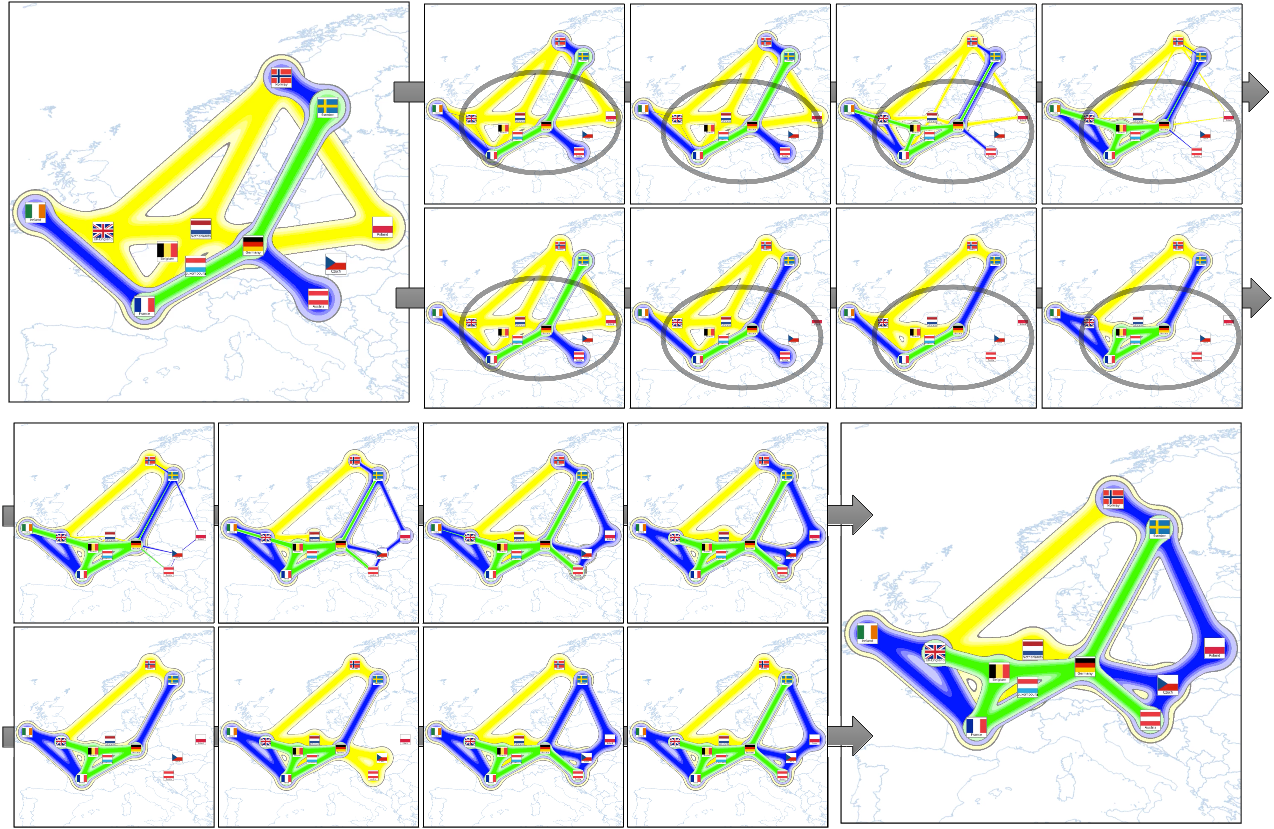|
A set diagram represents the membership relation among data elements.
It is often visualized as secondary information on top of primary information, such as the spatial positions of elements on maps and charts.
Visualizing the temporal evolution of such set diagrams as well as their primary features is quite important;
however, conventional approaches have only focused on the temporal behavior of the primary features and do not provide an effective means to highlight notable transitions within the set relationships.
In this project, we formulated an animation approach for such dynamic set diagrams to fully elucidate the underlying temporal changes in the set memberships of the data elements.
For this purpose,
we employed a graph-based representation of a set diagram,
which helps decompose the entire temporal transition into atomic changes associated with the data elements for composing stepwise animations automatically.
Our technical contribution lies in optimizing the sequence of the atomic changes to reduce the gaze shifts imposed on the viewers and in arranging the depth ordering of sets during the animation to minimize occlusions.
In addition, we decrease the duration of the entire transition by clustering conflict-free atomic changes while retaining visual clarity in the animation.
Fig. 1 shows a stepwise animation between two set diagrams generated automatically using our approach.
Compared to the simple interpolation on the top (Fig. 1(a)),
our approach (Fig. 1(b)) can successfully visualize how the source set diagram changes into the target one while suppressing occlusions among the sets.
See the video in Fig. 2 for more details about the idea of this work.
|



